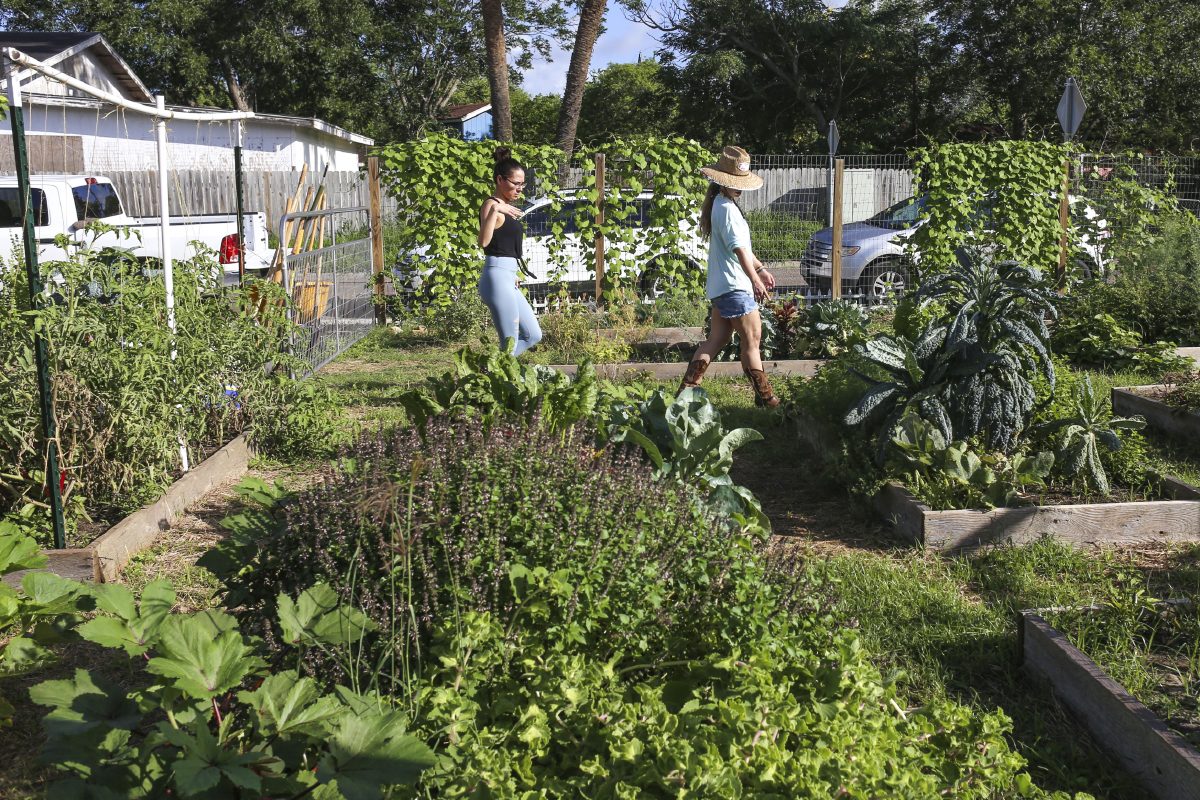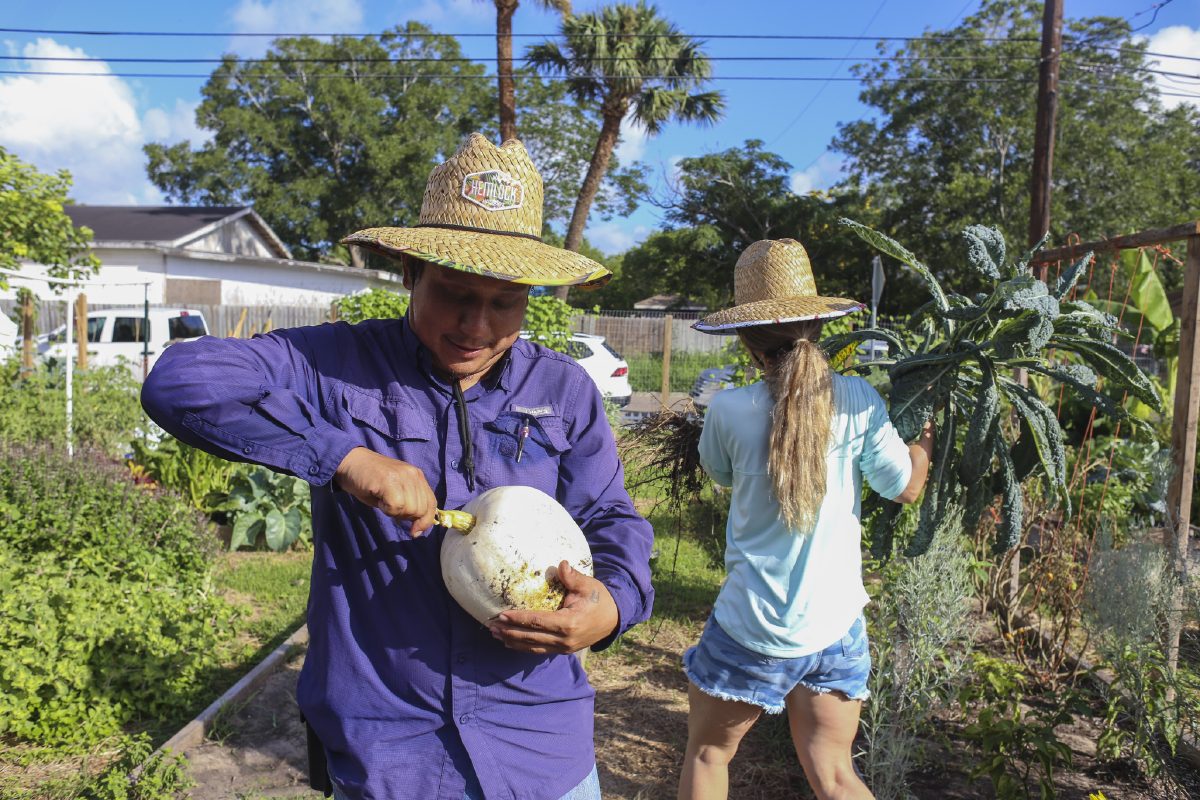Community members braved the early morning heat on Friday to take care of the vibrant, thriving plant beds at Tres Angeles Community Garden. Established in August 2013, the garden serves as a peaceful, meditative educational space for neighbors learning to grow their own food in sustainable ways.
Members of the Brownsville Wellness Coalition take care of the garden in memory of the three children murdered on the property by death row inmate John Allen Rubio before the house was torn down. The colorful garden built in its place is notably serene, something the coalition’s staff recognizes and actively works to preserve.
“I always say that people should bring the good energy and the negative energy stays behind there,” said David Vasquez, pointing at the garden’s fence. Vasquez oversees and cares for BWC’s five community gardens. “People should bring this nice, beautiful energy and embrace the garden as something beautiful and something natural. It’s very amazing just to come here and see the growth of this garden.”
The range of produce grown on the corner lot is notable. Right now volunteers are caring for mint, cuban oregano, fennel, sage, kale, squash, brussel sprouts, and even swiss chard, which is nearly out of season. A single white pumpkin sits ready to be picked. Vasquez said although it’s a cold weather crop, he experiments with varieties that can tolerate the Rio Grande Valley’s heat and humidity.
“We have some fruit trees that are growing but they’re still kind of young. We have catnip, we have tuscan basil, we have rosemary, and we have some figs also. They’re almost ready, too — hopefully in about another month they’ll ripen up,” he explained.
Staff is also caring for peppers, eggplant, tomatoes, and hot peppers they’re preparing to transplant. Come July, volunteers will help Vasquez begin working with cover crops. “Those give biomass to the soil. Maybe some peas or oats, maybe sun hemp. I just got some funding approved to buy seeds so we can experiment with that — just working with the soil.”
“What we’ve already added is a little bit of azomite, which is this volcanic rock dust that gives life to your soil and improves the potassium in the plant. That allows it to resist disease and stay healthy as it grows,” he said.
He pointed out plants in two different beds — one without the azomite and one with it. The plant without the added azomite has powdery mildew growing on its leaves, common in the Valley in vegetable plants due to the humidity.
Another ongoing project is the transplant of seedling montezuma cypress trees collected from La Posada in Southmost which Vasquez hopes will be replanted.










